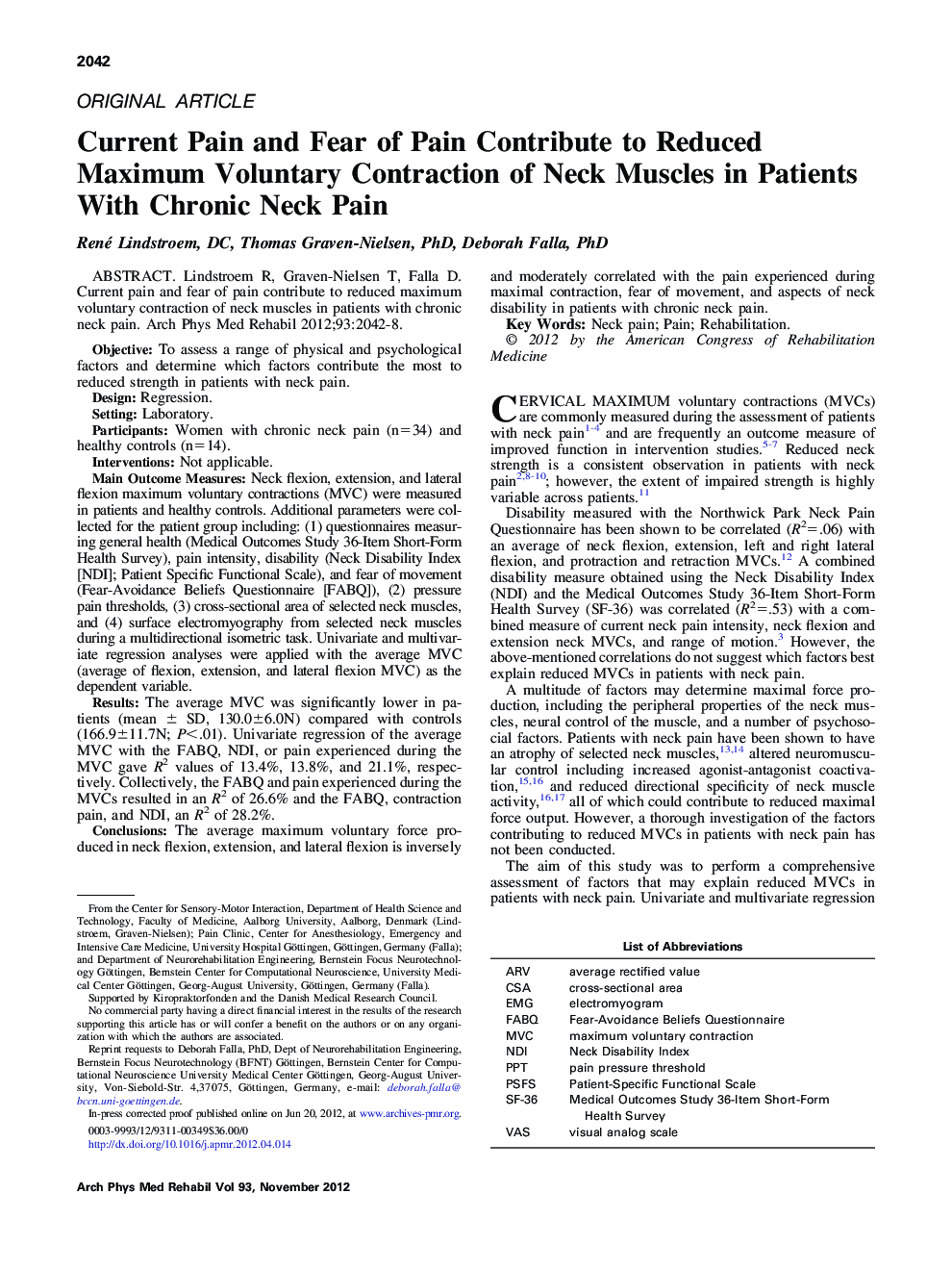| کد مقاله | کد نشریه | سال انتشار | مقاله انگلیسی | نسخه تمام متن |
|---|---|---|---|---|
| 3449638 | 1595719 | 2012 | 7 صفحه PDF | دانلود رایگان |

Lindstroem R, Graven-Nielsen T, Falla D. Current pain and fear of pain contribute to reduced maximum voluntary contraction of neck muscles in patients with chronic neck pain.ObjectiveTo assess a range of physical and psychological factors and determine which factors contribute the most to reduced strength in patients with neck pain.DesignRegression.SettingLaboratory.ParticipantsWomen with chronic neck pain (n=34) and healthy controls (n=14).InterventionsNot applicable.Main Outcome MeasuresNeck flexion, extension, and lateral flexion maximum voluntary contractions (MVC) were measured in patients and healthy controls. Additional parameters were collected for the patient group including: (1) questionnaires measuring general health (Medical Outcomes Study 36-Item Short-Form Health Survey), pain intensity, disability (Neck Disability Index [NDI]; Patient Specific Functional Scale), and fear of movement (Fear-Avoidance Beliefs Questionnaire [FABQ]), (2) pressure pain thresholds, (3) cross-sectional area of selected neck muscles, and (4) surface electromyography from selected neck muscles during a multidirectional isometric task. Univariate and multivariate regression analyses were applied with the average MVC (average of flexion, extension, and lateral flexion MVC) as the dependent variable.ResultsThe average MVC was significantly lower in patients (mean ± SD, 130.0±6.0N) compared with controls (166.9±11.7N; P<.01). Univariate regression of the average MVC with the FABQ, NDI, or pain experienced during the MVC gave R2 values of 13.4%, 13.8%, and 21.1%, respectively. Collectively, the FABQ and pain experienced during the MVCs resulted in an R2 of 26.6% and the FABQ, contraction pain, and NDI, an R2 of 28.2%.ConclusionsThe average maximum voluntary force produced in neck flexion, extension, and lateral flexion is inversely and moderately correlated with the pain experienced during maximal contraction, fear of movement, and aspects of neck disability in patients with chronic neck pain.
Journal: Archives of Physical Medicine and Rehabilitation - Volume 93, Issue 11, November 2012, Pages 2042–2048